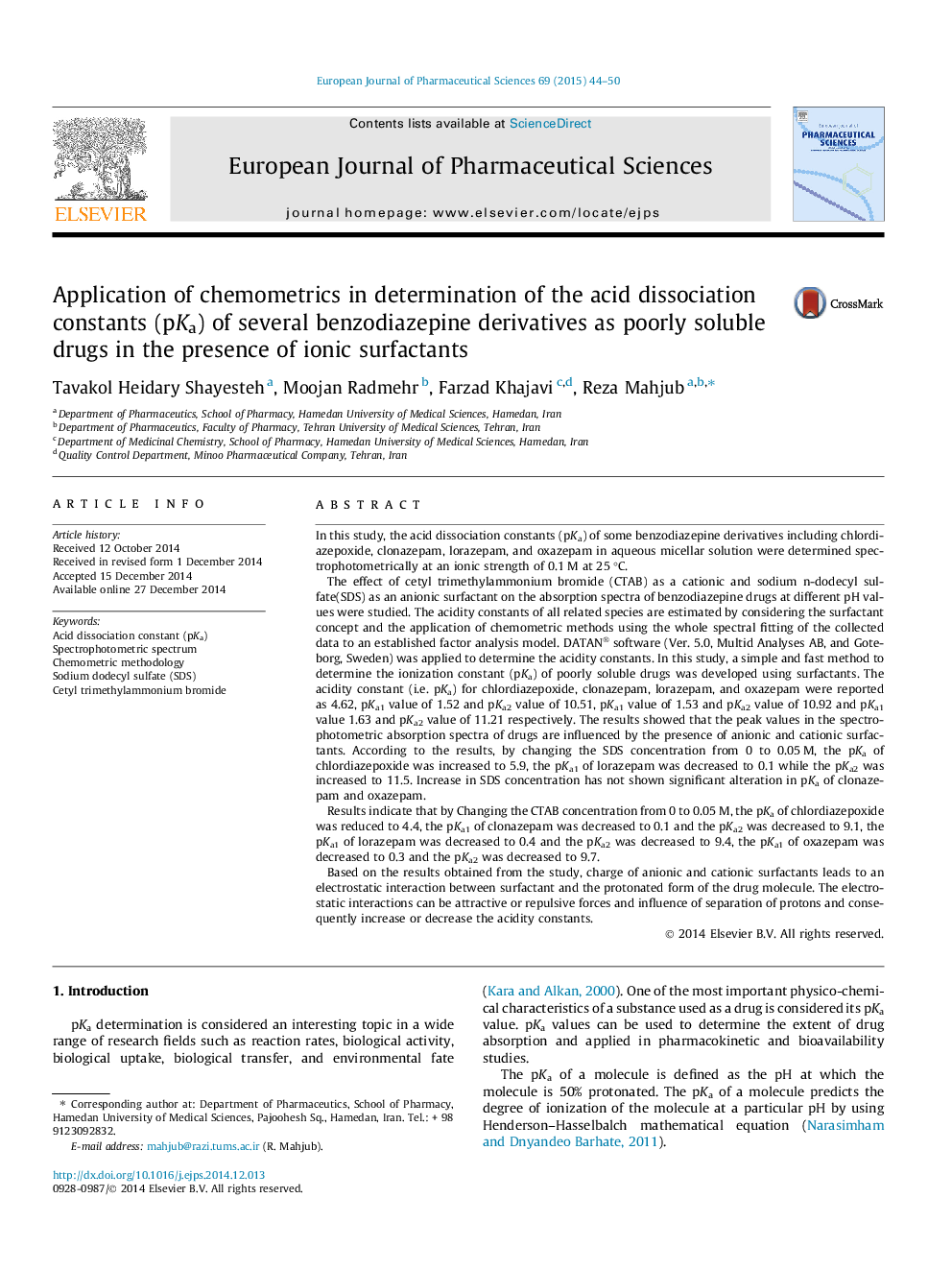| کد مقاله | کد نشریه | سال انتشار | مقاله انگلیسی | نسخه تمام متن |
|---|---|---|---|---|
| 2480368 | 1556181 | 2015 | 7 صفحه PDF | دانلود رایگان |

In this study, the acid dissociation constants (pKa) of some benzodiazepine derivatives including chlordiazepoxide, clonazepam, lorazepam, and oxazepam in aqueous micellar solution were determined spectrophotometrically at an ionic strength of 0.1 M at 25 °C.The effect of cetyl trimethylammonium bromide (CTAB) as a cationic and sodium n-dodecyl sulfate(SDS) as an anionic surfactant on the absorption spectra of benzodiazepine drugs at different pH values were studied. The acidity constants of all related species are estimated by considering the surfactant concept and the application of chemometric methods using the whole spectral fitting of the collected data to an established factor analysis model. DATAN® software (Ver. 5.0, Multid Analyses AB, and Goteborg, Sweden) was applied to determine the acidity constants. In this study, a simple and fast method to determine the ionization constant (pKa) of poorly soluble drugs was developed using surfactants. The acidity constant (i.e. pKa) for chlordiazepoxide, clonazepam, lorazepam, and oxazepam were reported as 4.62, pKa1 value of 1.52 and pKa2 value of 10.51, pKa1 value of 1.53 and pKa2 value of 10.92 and pKa1 value 1.63 and pKa2 value of 11.21 respectively. The results showed that the peak values in the spectrophotometric absorption spectra of drugs are influenced by the presence of anionic and cationic surfactants. According to the results, by changing the SDS concentration from 0 to 0.05 M, the pKa of chlordiazepoxide was increased to 5.9, the pKa1 of lorazepam was decreased to 0.1 while the pKa2 was increased to 11.5. Increase in SDS concentration has not shown significant alteration in pKa of clonazepam and oxazepam.Results indicate that by Changing the CTAB concentration from 0 to 0.05 M, the pKa of chlordiazepoxide was reduced to 4.4, the pKa1 of clonazepam was decreased to 0.1 and the pKa2 was decreased to 9.1, the pKa1 of lorazepam was decreased to 0.4 and the pKa2 was decreased to 9.4, the pKa1 of oxazepam was decreased to 0.3 and the pKa2 was decreased to 9.7.Based on the results obtained from the study, charge of anionic and cationic surfactants leads to an electrostatic interaction between surfactant and the protonated form of the drug molecule. The electrostatic interactions can be attractive or repulsive forces and influence of separation of protons and consequently increase or decrease the acidity constants.
Figure optionsDownload high-quality image (173 K)Download as PowerPoint slide
Journal: European Journal of Pharmaceutical Sciences - Volume 69, 10 March 2015, Pages 44–50